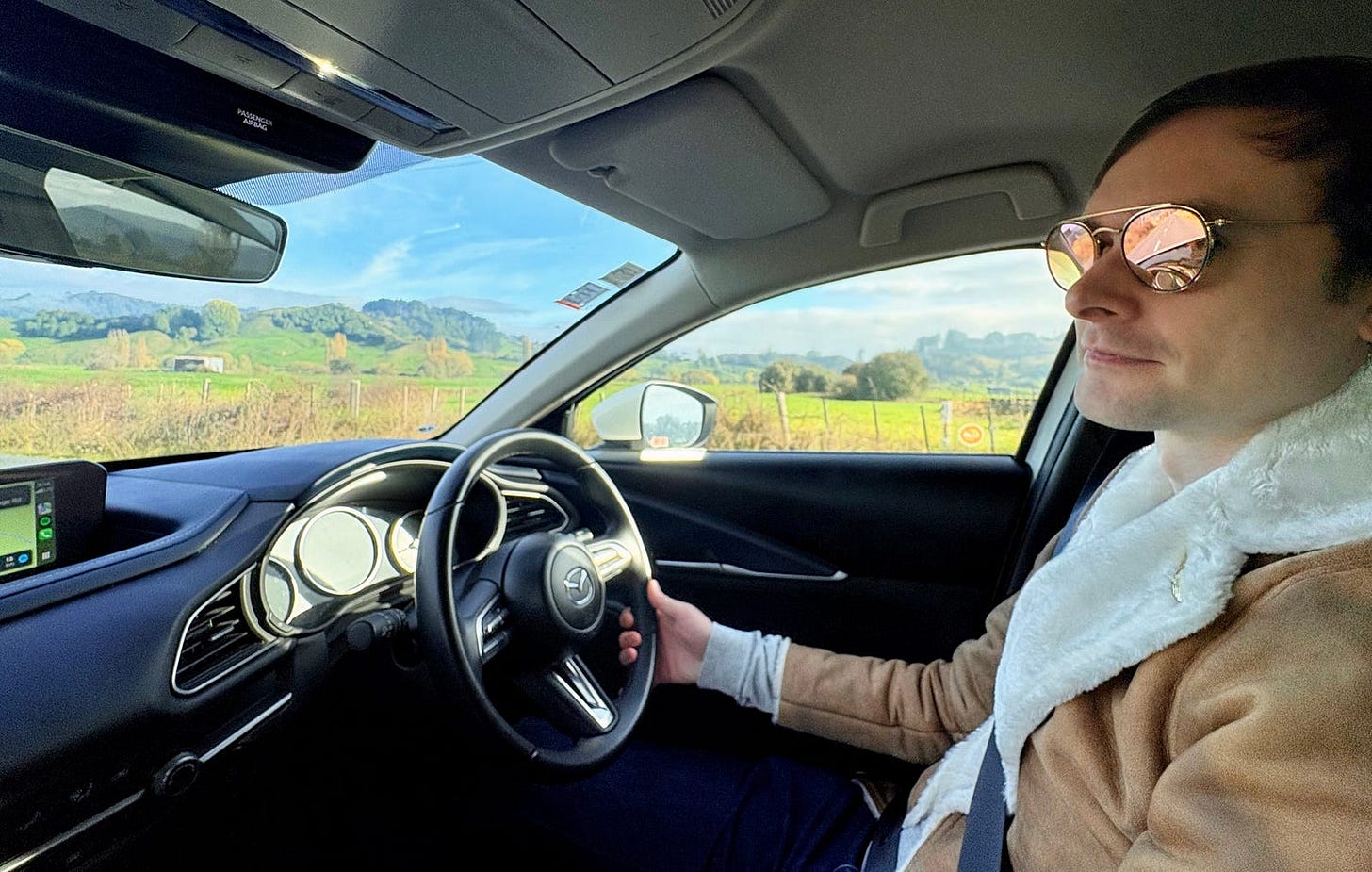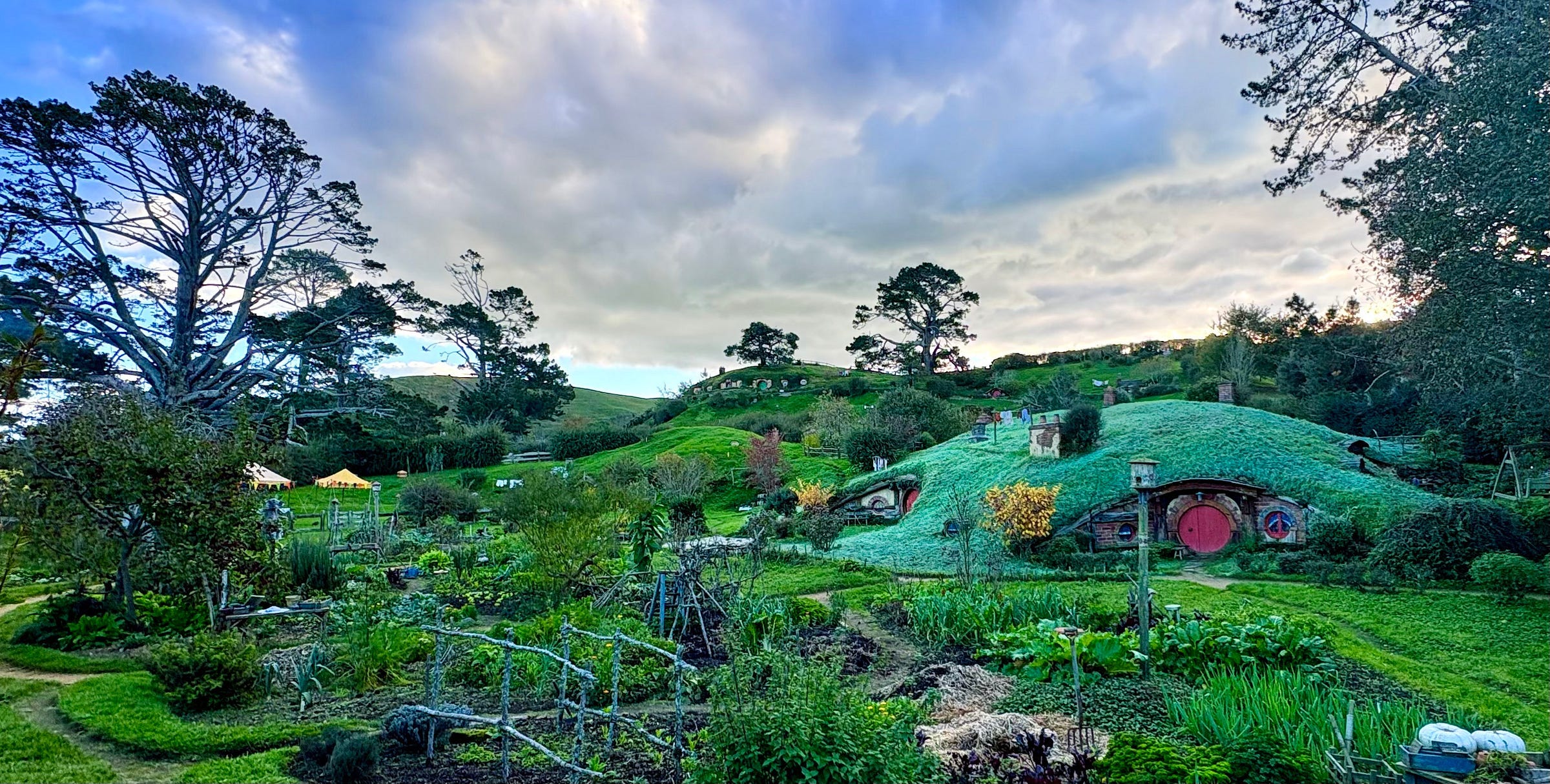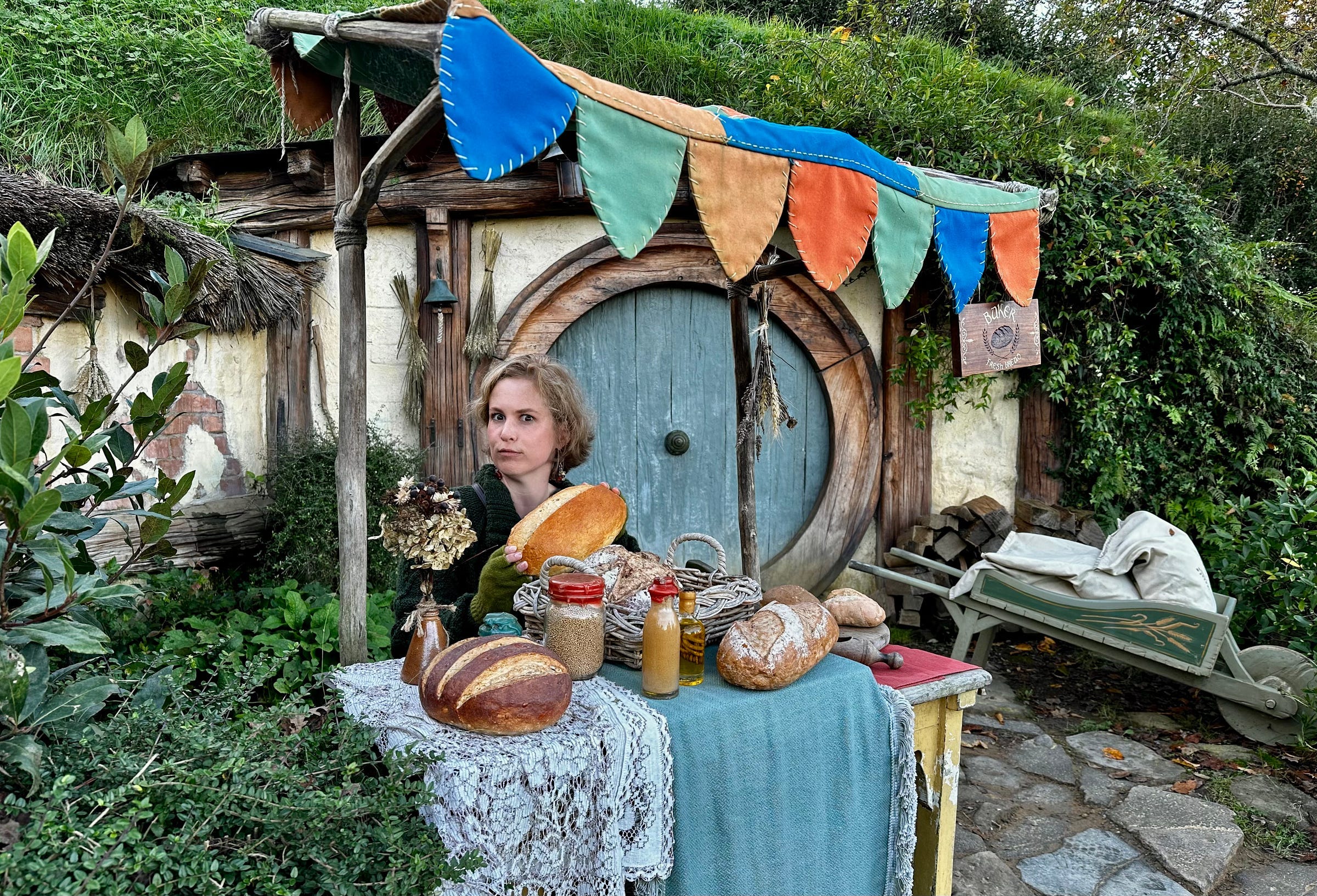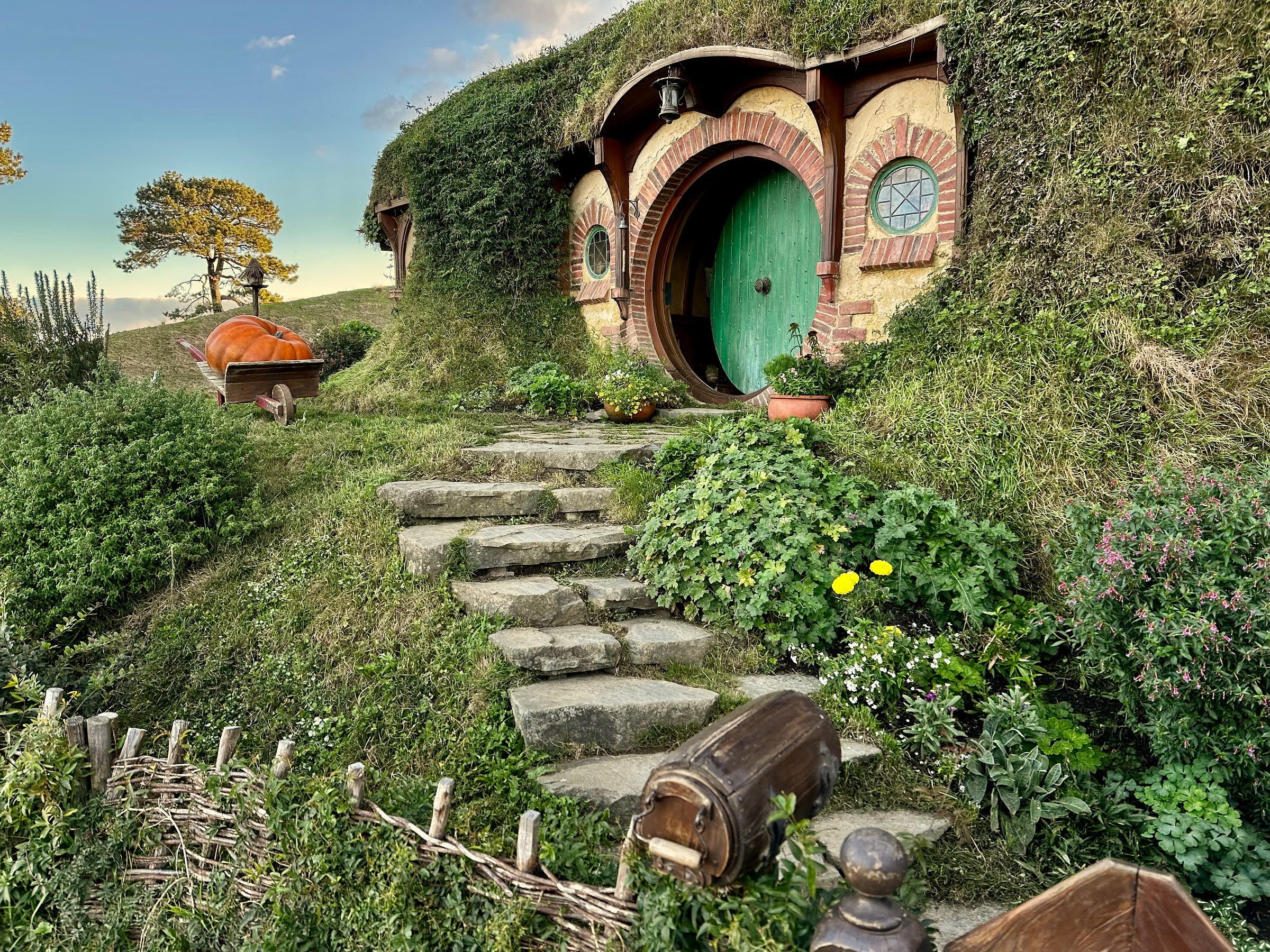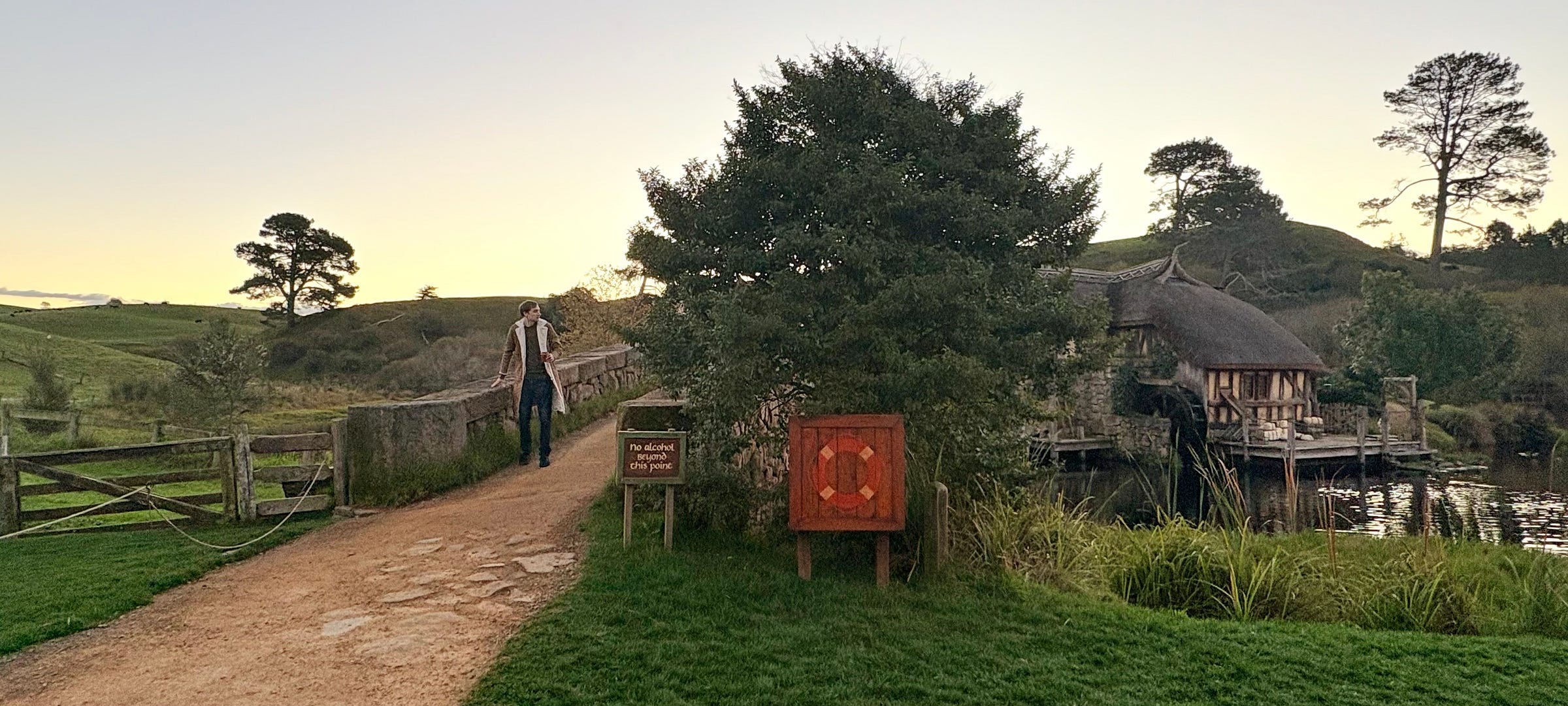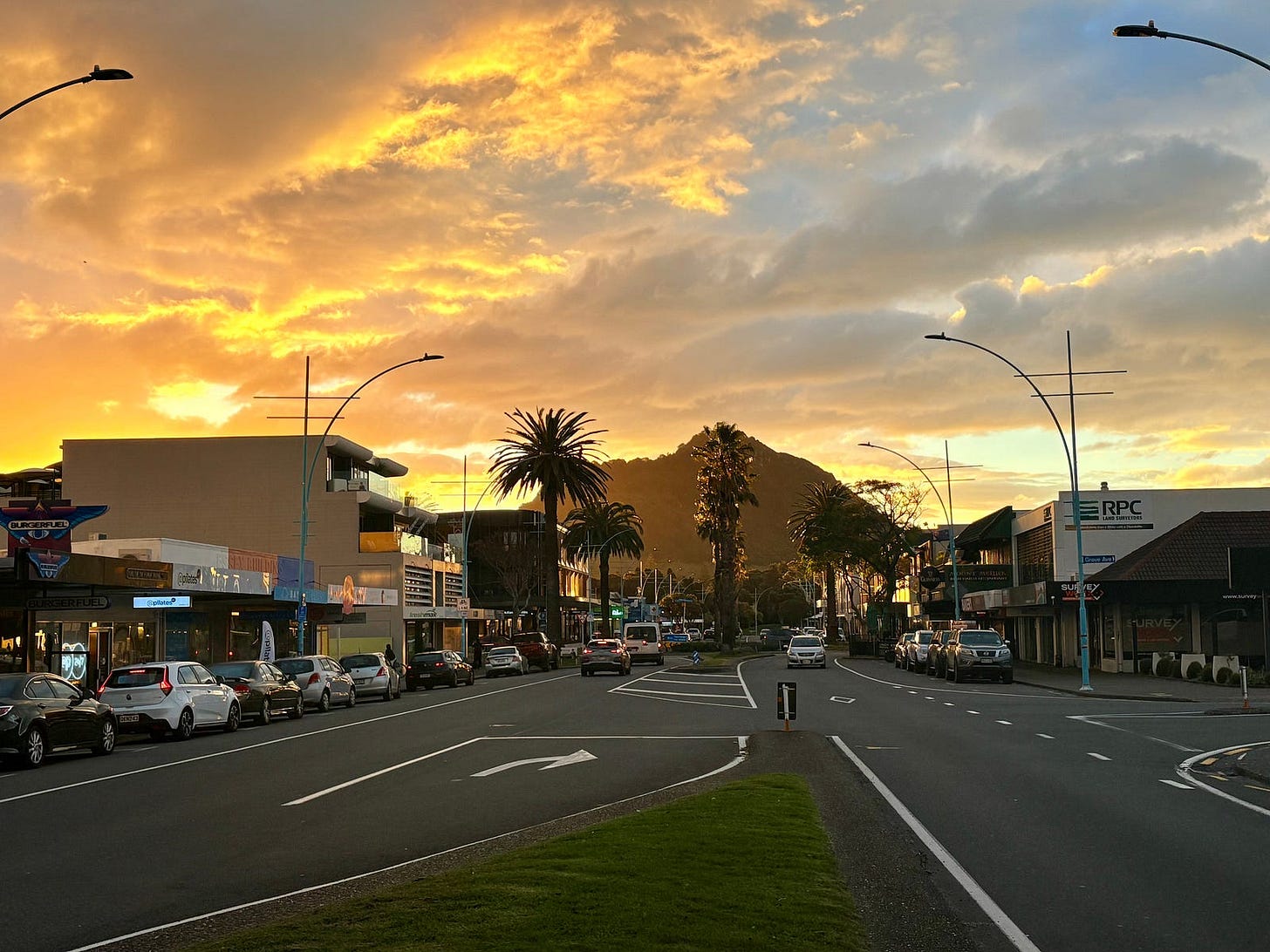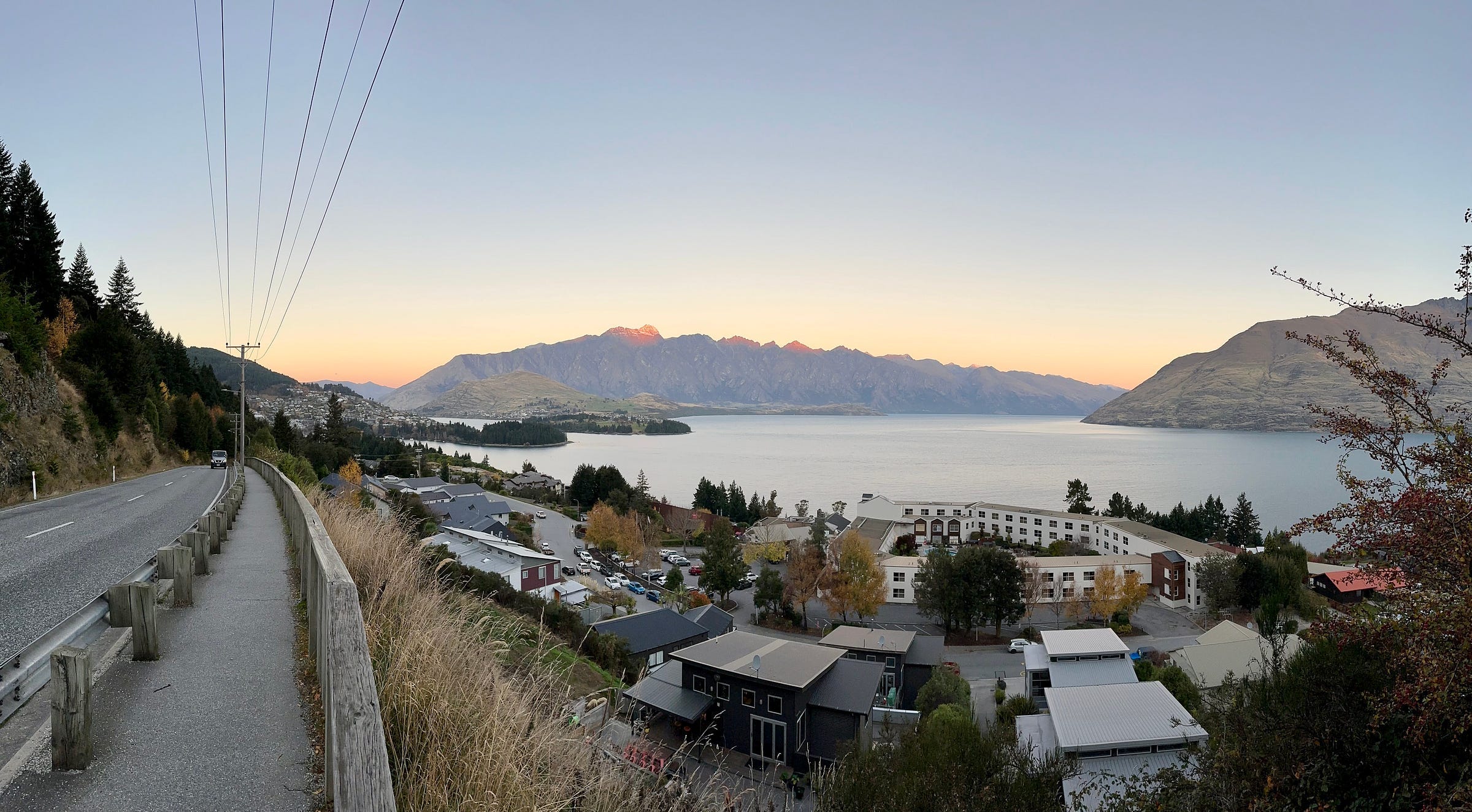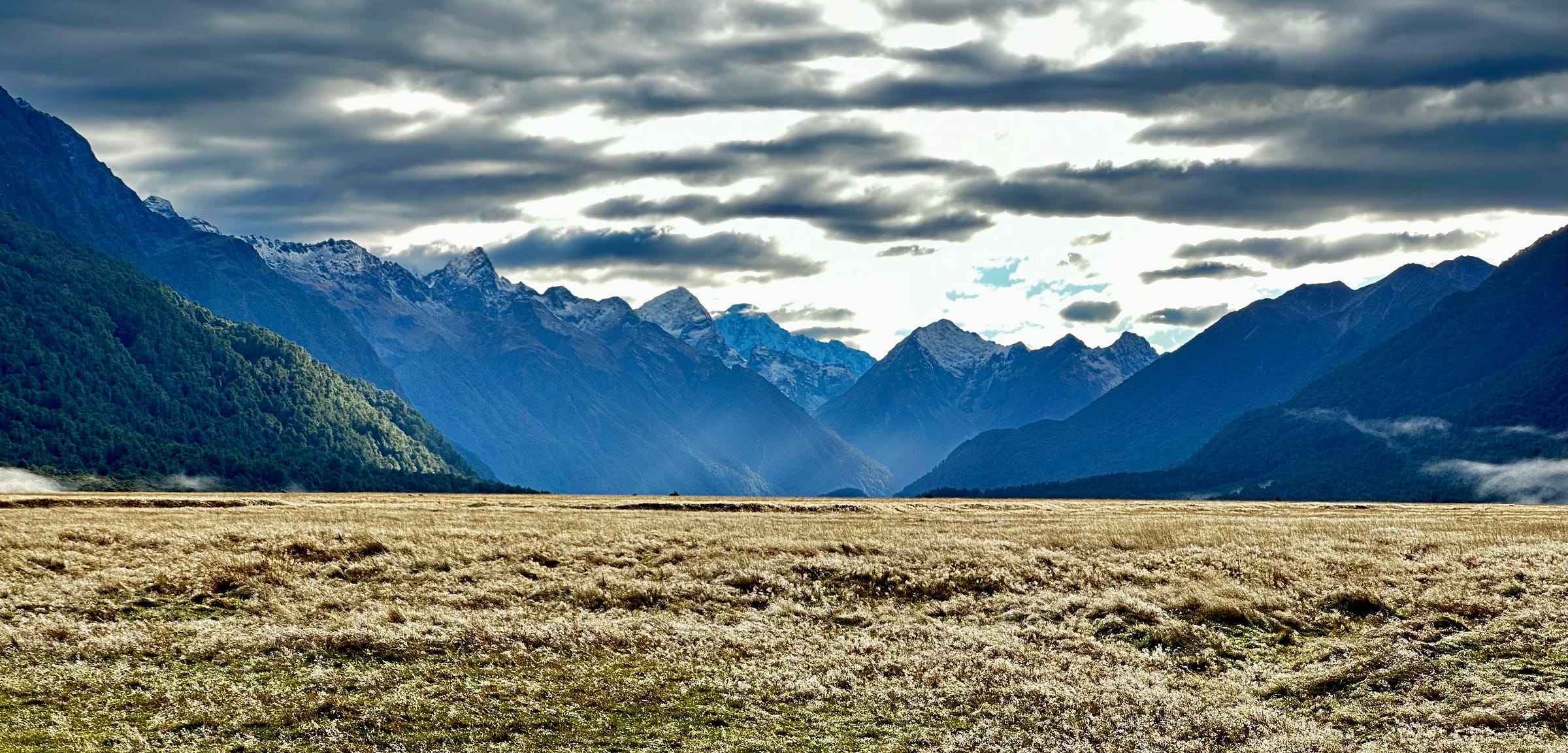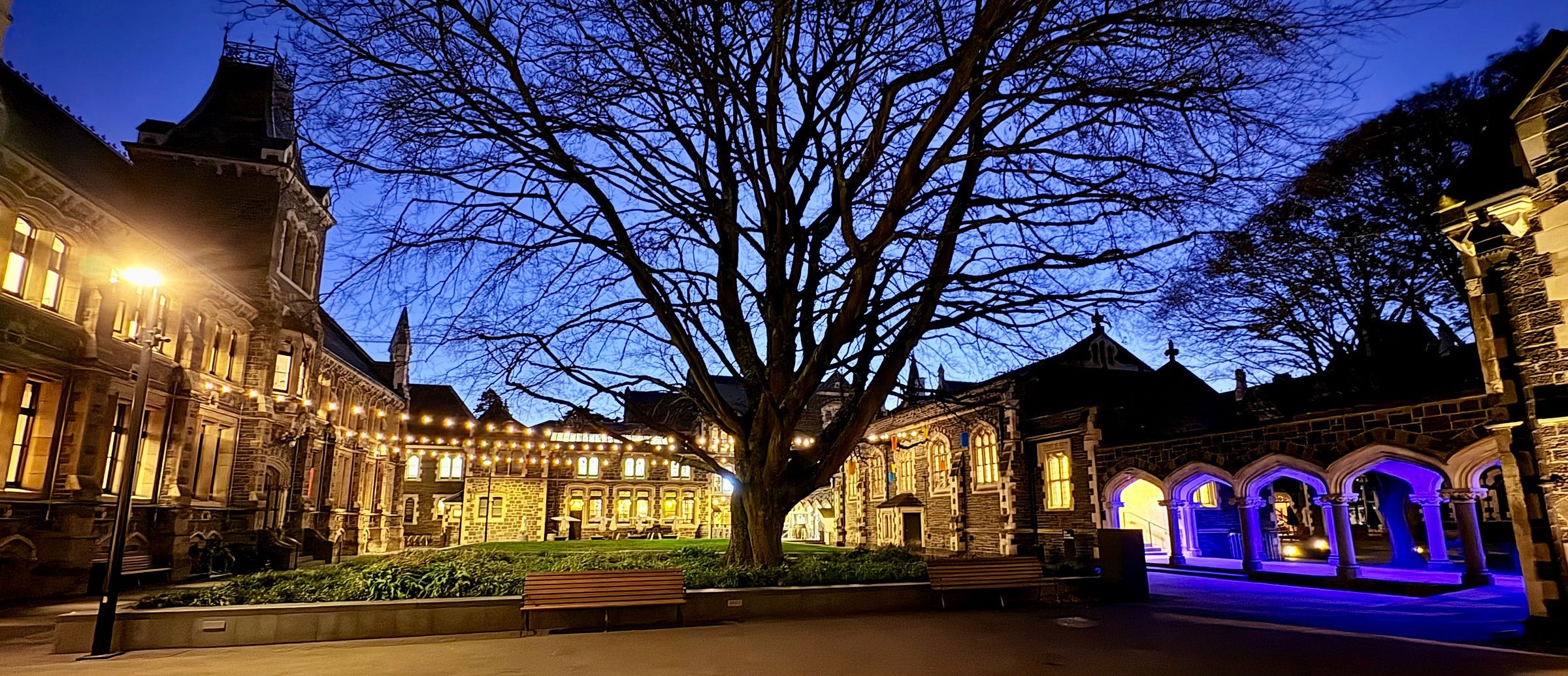Travelogue: Aotearoa
May 2025
I’m sitting in YVR for a nine hour layover on our way back from New Zealand, so I feel like now is as good a time as any to write up some notes on our adventures across the Land of the Long White Cloud.
Te Ika-a-Māui: The North Island
Day One: Auckland
We began our journey flying into Auckland. After a thirty hour aerial odyssey originating from our home in Halifax and connecting through Vancouver, we touched down in New Zealand’s largest city and rented a car, as all the things we especially wanted to see on the North Island (called Te Ika-a-Māui — “the fish of Māui” — in Māori) were quite drivable. After being stuck in various airports and aircraft and cloaked in more or less perpetual darkness since our departure, stepping out into the cool autumn sunshine in Auckland was a welcome breath of fresh air.
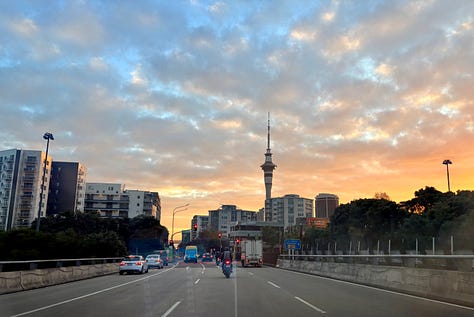
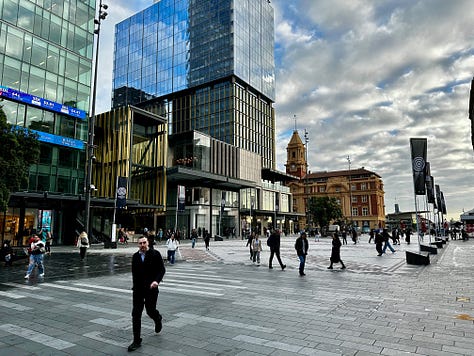
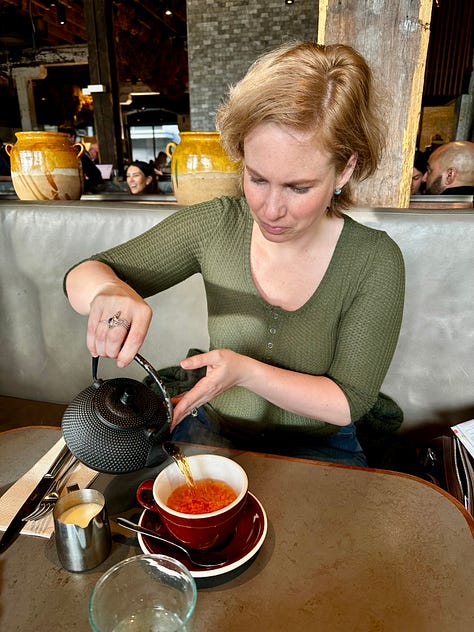
From there, we wandered down to a cute little café called Amano for some breakfast and a little jet lag recovery (New Zealand is almost as far as one can get from Nova Scotia without leaving the planet). Auckland has a great hop on/hop off bus, so we busied ourselves about the various sights of the city while waiting for our room to be ready. After exploring Auckland a bit, we headed back to the hotel for an early bedtime, as we were slated to set out to Waitomo the following morning.
Day Two: Waitomo
Honestly, just driving around the countryside was enough for New Zealand to enthrall me. We headed south from Auckland and drove through sun-dappled rolling hills and wooded fields. Upon arriving in Waitomo, we delved into a couple of glow worm caves. Our first cave, the eponymously named Waitomo Cave, required some navigation via boat through the pitch-black depths, but the glowworm displays were spectacular. The on-foot trek through Ruakuri Cave was longer and more geologically interesting, but its population of glowworms were a little more shy.


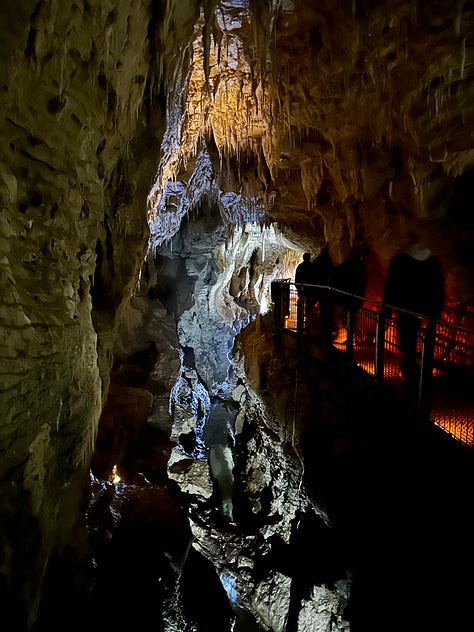
After we’d had our fill exploring the depths, we returned to the surface and drove back up toward Hamilton. Our destination was a small town called Whatawhata (I believe pronounced “fata-fata”, as the “wh” digraph in Māori is pronounced like an “f” in English). We pulled into a small driveway on the edge of some farmland and ditched the car for a tiny four wheeled farm buggy, which we drove down the hill and into a secluded glen for our evening accommodations at Underhill Valley.
No small part of our journey was a pilgrimage to the lands that inspired and played host to the film incarnations of the Lord of the Rings and The Hobbit, and believe me when I say that Underhill Valley is as close to a genuine hobbit hole experience as you can get anywhere outside the books themselves. The environment is perfect, with a small lake, elegant footbridge, and suitably rustic composting outhouse. The “cave-house” itself is gorgeous and well-appointed with everything you need to live like a Hobbit for the night. There’s no power, but plenty of candles, firewood, and suitably hobbity décor. And so, we stoked the fire in the wood stove, cracked open a bottle of wine, and slipped under the sheepskin blankets to await the morn.

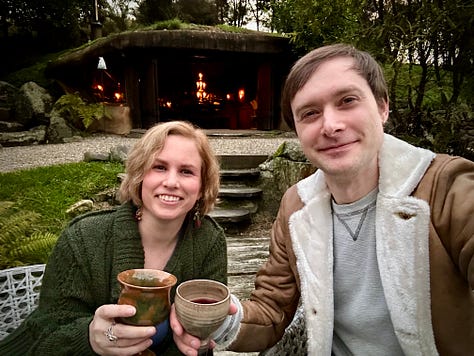

Day Three: Hobbiton
The following day, after tidying up our erstwhile hobbit home, we struck out once again — this time, bound for the Shire proper. As we were quite close by, however, and our prearranged engagement wasn’t until the afternoon, we decided to stop by Hamilton Gardens on the way, and what a great decision that was.
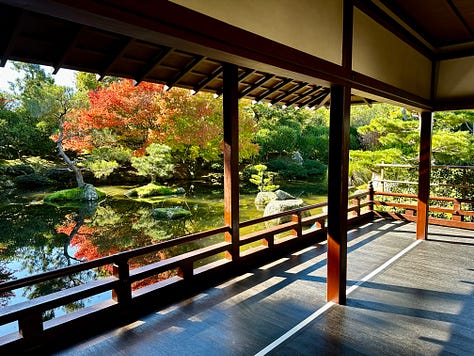
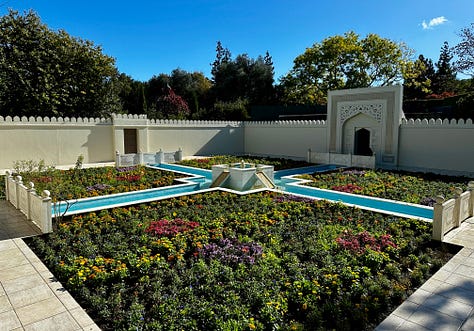
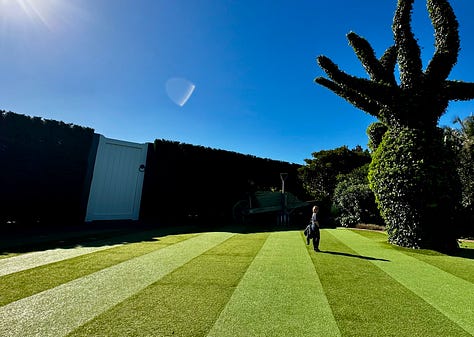
Hamilton Gardens is actually a series of eighteen enclosed but interconnected gardens, each themed after a specific region, time period, or concept. Favourites of ours included the Japanese Garden, Indian Char Bagh Garden, and the Surrealist Garden. After our brief diversion through the gardens, however, it was time for the main event: our evening tour of Hobbiton.
It’s rare to go into something with high expectations and leave with them exceeded in every way, but that was our visit to Hobbiton. Each visit is fully guided, and we had booked the last tour of the day, known as the “Evening Banquet” tour. This is a walk around Hobbiton at sunset followed by a banquet at the Green Dragon, and then another stroll through the Shire by lantern-light.

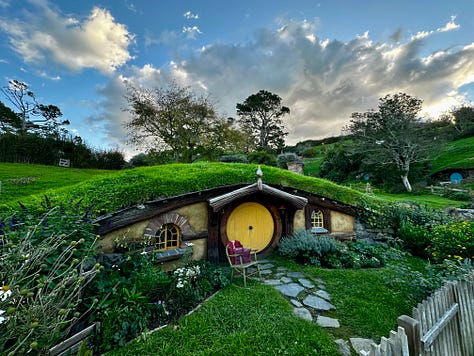


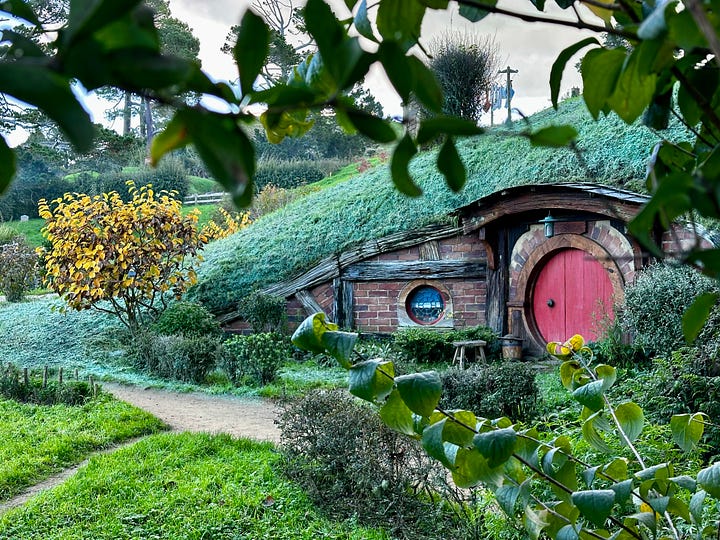
Having watched the films, I had anticipated that no small amount of “movie magic” had gone into depicting Hobbiton. I figured a few Hobbit holes had been built, perhaps modularly to allow them to look like various different homes as necessary, and a lot of the rest of the environment had been composited together during post production to look like a whole town. In fact, the Hobbiton that exists on screen is almost entirely extant in reality. The road into town where Frodo first greets Gandalf with a mock-accusatory “You’re late!”, the gardens at the foot of the hill, the Party Tree and its surrounding grounds, Bagshot Row, and Bag End are all there, precisely where they appear to be on screen.
As we arrived at the Hobbiton sign, our guide gestured to the trail before us. Behind us, he said, laid New Zealand. And ahead — Middle-earth. Indeed, as we crossed into the lands beyond, the rolling hills out to the horizon were indistinguishable from Tolkien’s fantasy landscape. Rounding the corner, Hobbiton came into view — forty-four hobbit holes all painstakingly built, decorated, and arranged to reflect the town in all its cinematic glory. All the plants, gardens, and walkways meticulously grown and maintained year round as a living, breathing town.
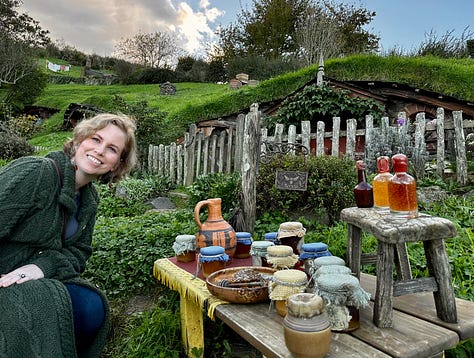
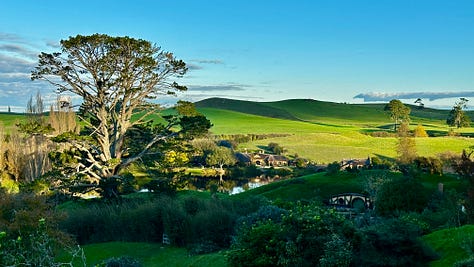

Our journey took us around the town, winding up to the top of the hill, where we found the Baggins family home — Bag End. Overlooking the patchwork fields of the Shire, Bag End is more than just a charming hobbit-hole; it’s where Gandalf first arrived in The Hobbit to nudge Bilbo toward adventure. Years later, he would return through that same round green door in The Fellowship of the Ring, seeking answers about a certain gold ring. Standing before it, you can almost hear the clink of teacups and the distant echo of dwarves singing in the pantry.
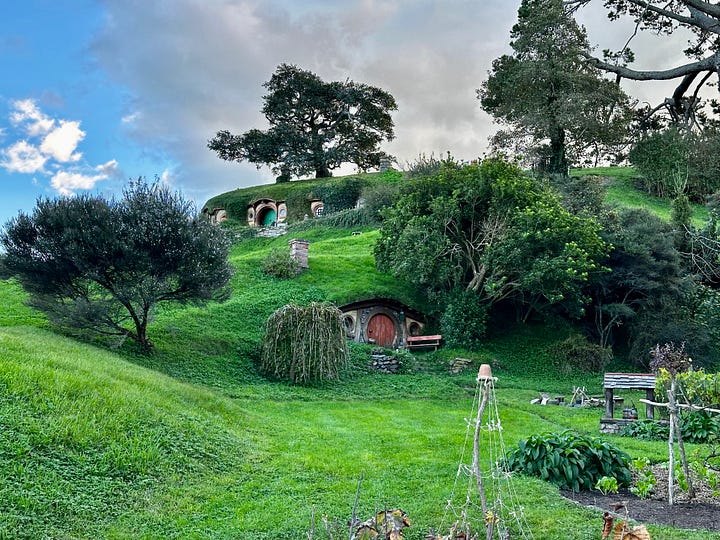

Strolling back down from the top of the hill we made a stop off at Bagshot Row, home of the Gamgee family. While most of the hobbit holes in Hobbiton are merely well-designed façades, here the production team has taken the time to fully build out a hobbit home interior, complete with den, kitchen, larder, bedrooms, and all the comforts of a cozy hobbit home.

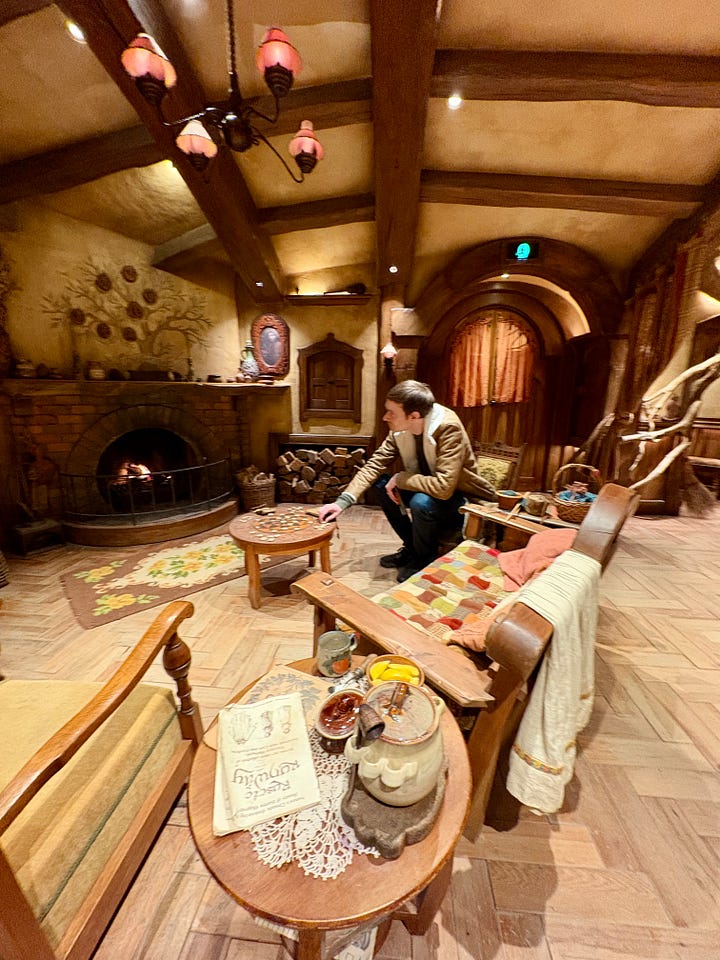
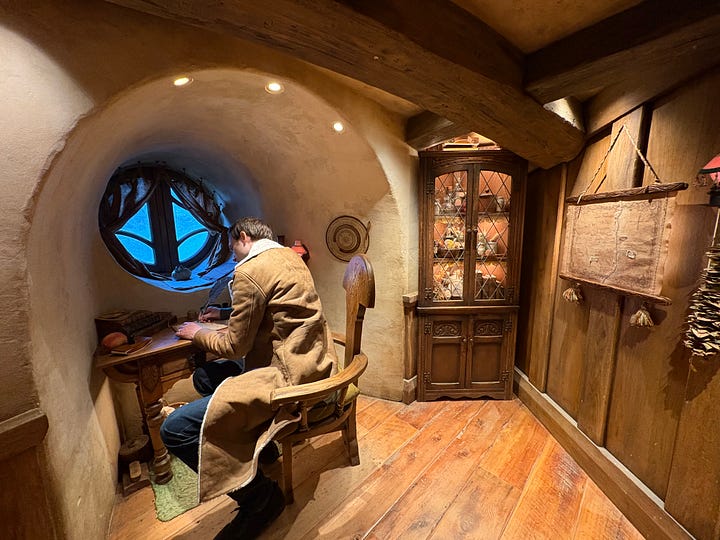

From there, we walked back down and across the Bywater Bridge to the Green Dragon, where a panoply of ales and a glorious banquet awaited us. In hobbit lore, the Green Dragon has long been the heart of Bywater’s social life — a place for lively gossip, old songs, and second helpings. It was here that Samwise Gamgee first nervously eyed Rosie Cotton across a crowded taproom, and where Frodo, Merry, and Pippin often passed quiet evenings before the world grew too wide
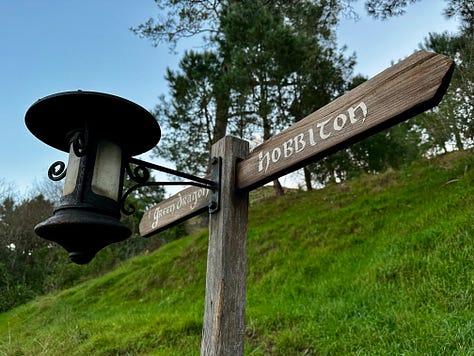

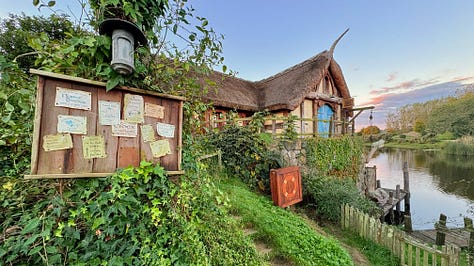
As everyone knows, the only brew that is tried and true comes from the Green Dragon, and the famous pub appears here just as it does in the film. The taps were overflowing with Southfarthing Ale, the feast was monumental, and Pickles the cat was on hand to clean up the leftovers.
Just a note about Pickles — apparently, she was found in a sack thrown off the back of a truck. The sack was filled with a litter of kittens, and sadly she was the only one to survive. One of the workers on set figured she was “in a real pickle” and the name stuck. She now lives in the Green Dragon as its only permanent resident, and I can think of no better place for a hard working seventeen-year-old cat than this glorious pub.
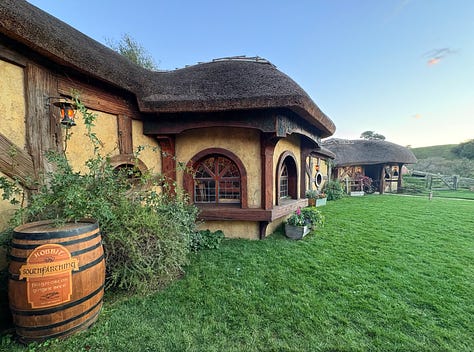
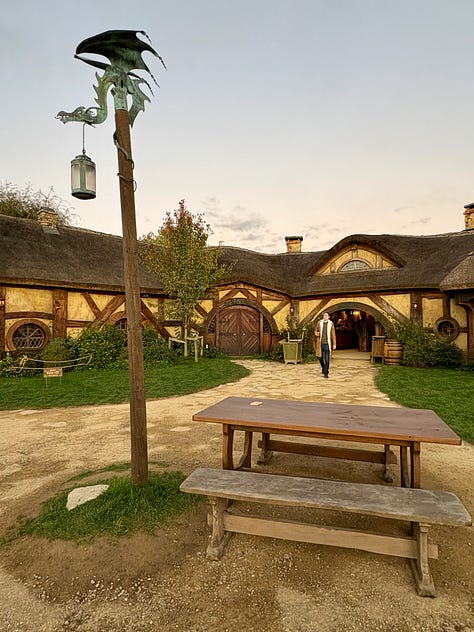
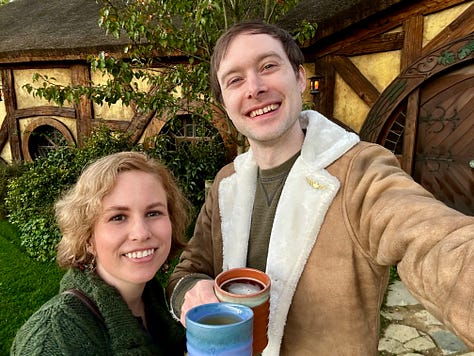

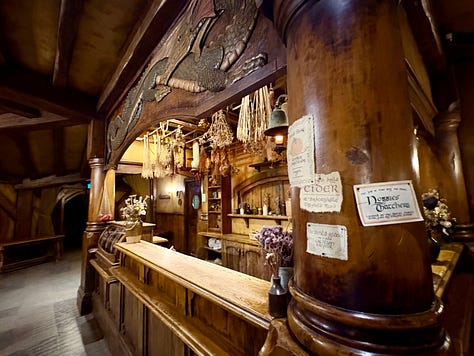

After dinner, the fields of Hobbiton were now bathed in the last light of Durin’s Day. As we walked out into the cool evening air, lamps in hand, we took one last stroll through the twilit Shire before packing up and heading home. Truly, it was as magical an adventure as we could have hoped for.

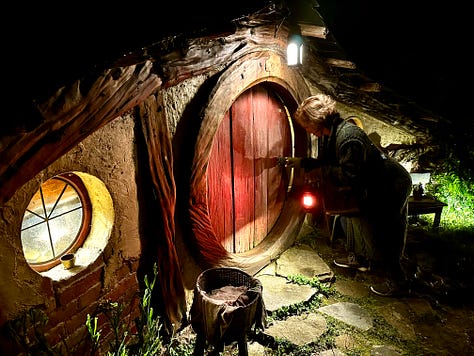
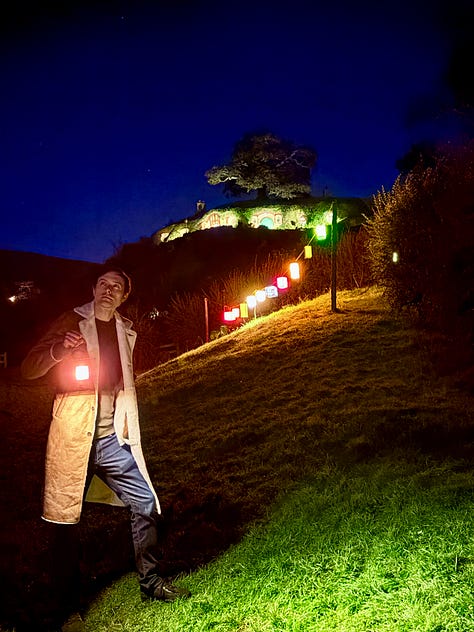
Day Four: Rotorua
The following day, we departed our B&B in Tīrau and drove down to Rotorua, stopping by Blue Spring to appreciate its incomparable natural beauty on the way. The spring supplies around 70% of New Zealand’s bottled water and maintains a striking clarity thanks to its slow underground journey — up to 100 years through volcanic rock. The vivid turquoise hue and gently swaying aquatic plants gave the whole scene a dreamlike quality, as if we’d stumbled into the hidden source of elven waters.

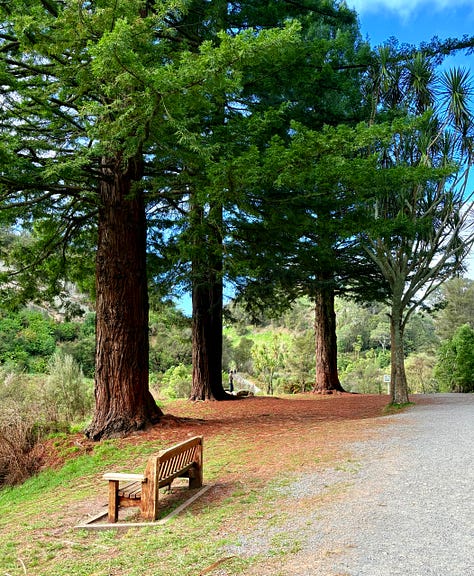

In Rotorua, we took at look at its famous geothermal pools, filled with copper, sulfur, and steam. In the evening, we took a ride up the hillside in a gondola to enjoy a cocktail and look out at the village from above, before heading back down to check out the Night Market.
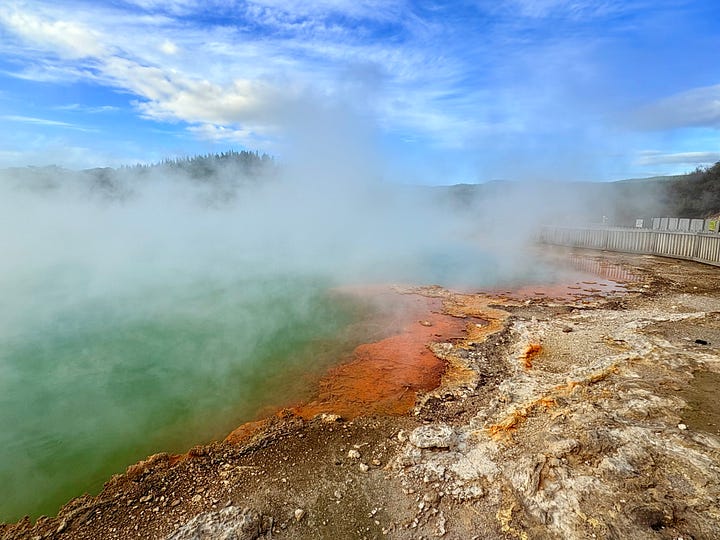

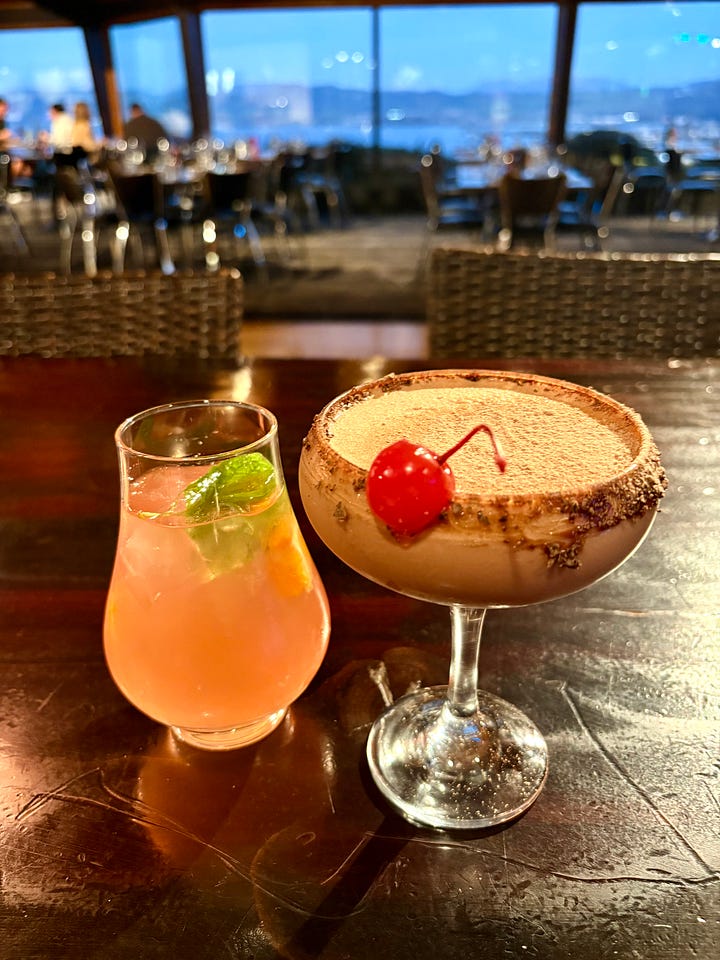
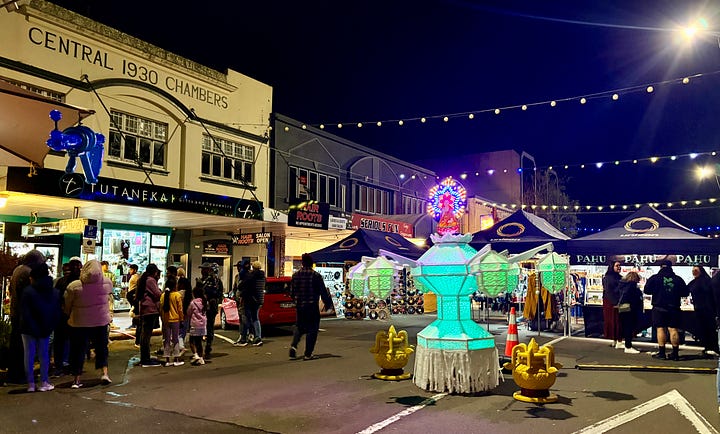
The following day, we spent a bit more time with the locals (the furry variety) at the Agrodome — a working farm and demonstration facility on the outskirts of town.
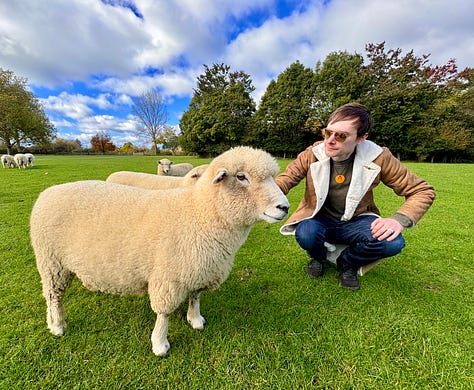
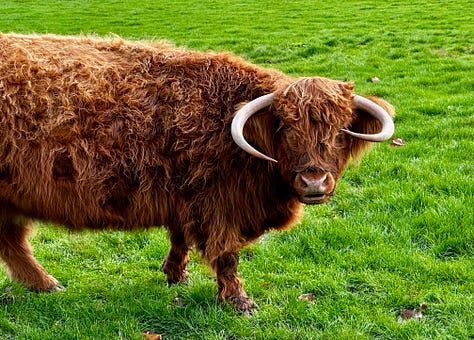
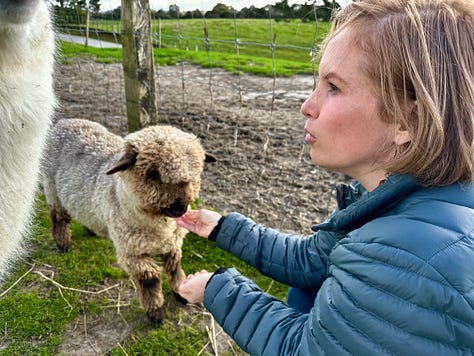
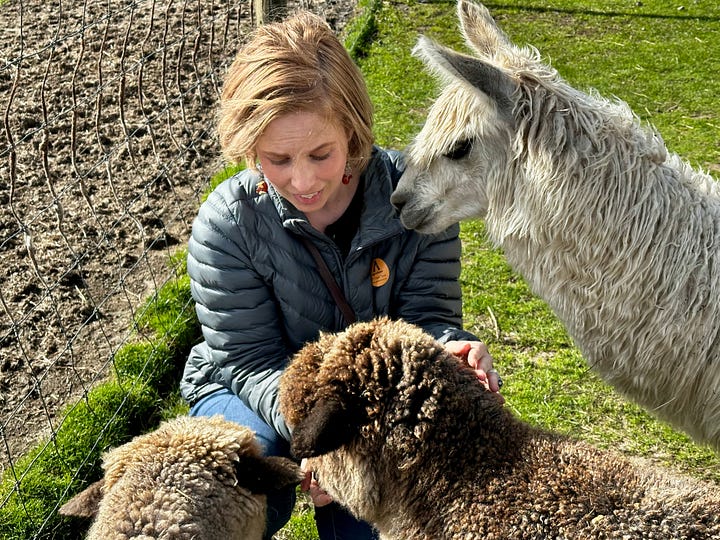
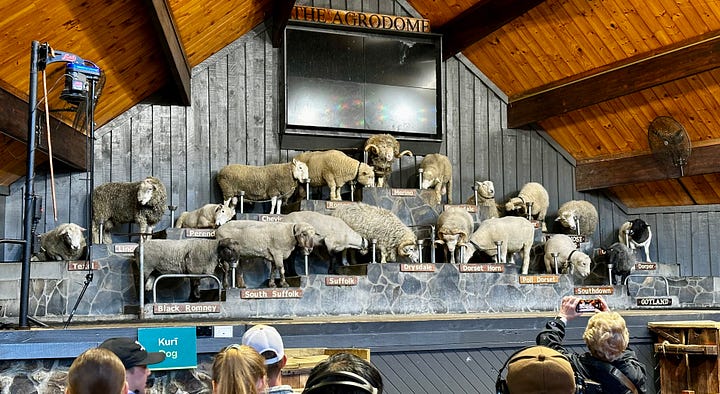
That evening, we drove up to Tauranga, out home base for the next several days. Part of the impetus for our trip was the marriage of Erin’s cousin Alex, and we were delighted to be asked to attend. In between evening dinners and the ceremony itself, we spent time around the town on the island’s north-eastern coast — truly a lovely spot.
Day Six: Tauranga
From Tauranga, we struck out on various adventures, including a visit to the National Kiwi Hatchery, the Māori village of Te Puia, and a sailing trip across Lake Taupō in search of Māori rock carvings.
Te Puia, in particular, was fascinating. A cultural and geothermal hub nestled in the Whakarewarewa Valley. The scent of sulfur hung in the air as plumes of steam rose from the ground. At the heart of it all, the mighty Pōhutu Geyser surged skyward — sometimes reaching heights of 30 metres — reminding us that the earth here is very much alive. Alongside the geothermal wonders, Te Puia is home to the New Zealand Māori Arts and Crafts Institute, where master carvers and weavers carry on traditions passed down through generations. The combination of natural spectacle and cultural depth made it one of the more memorable stops on our journey.
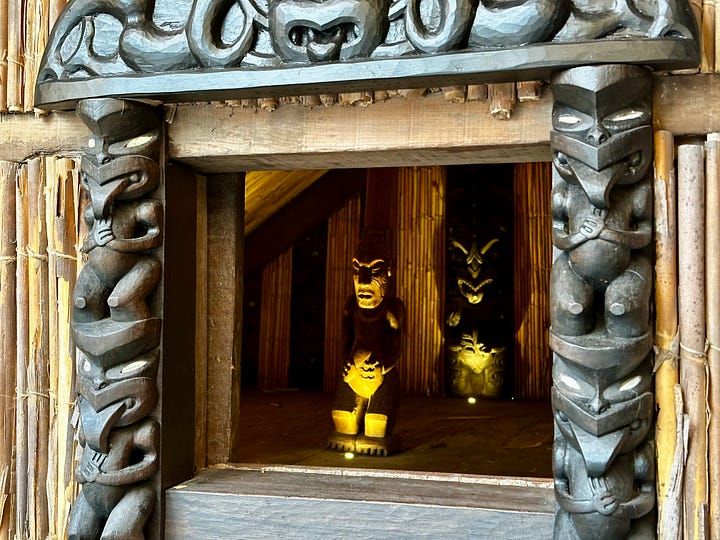
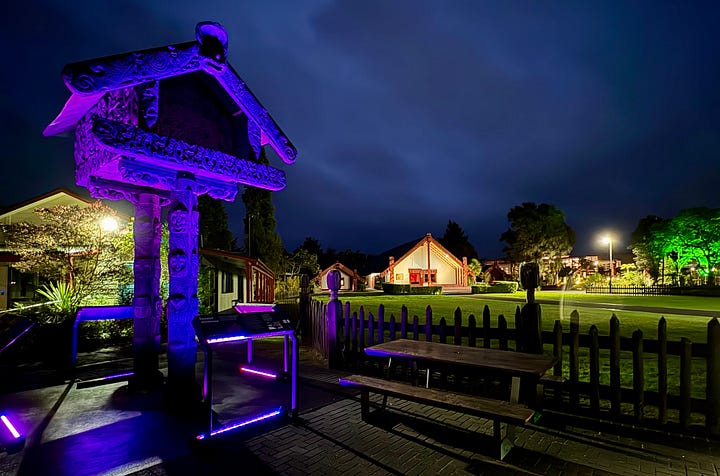
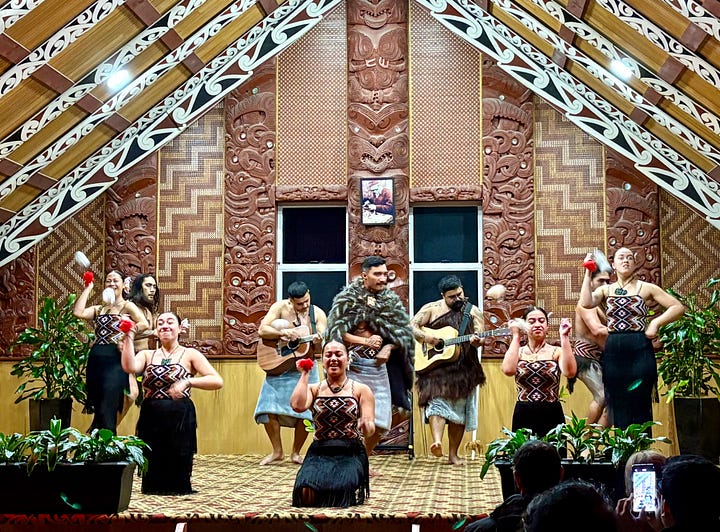
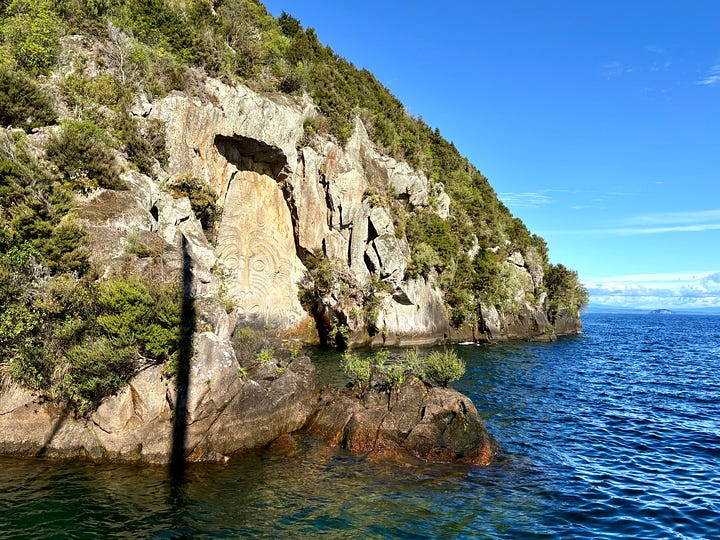
And though it felt like we had just begun to scratch the surface of the North Island, it was time to hop on a quick flight to Queenstown to continue our adventures further south…
Te Waipounamu: The South Island
Day Ten: Queenstown
Upon arrival in Queenstown, we headed to our lakeside lodge for a marvellous degustation and then headed to bed early — our next adventure arrived bright and early at 6am the following morning with a journey out to the Fiordlands, carved by a glaciation process over several million years.

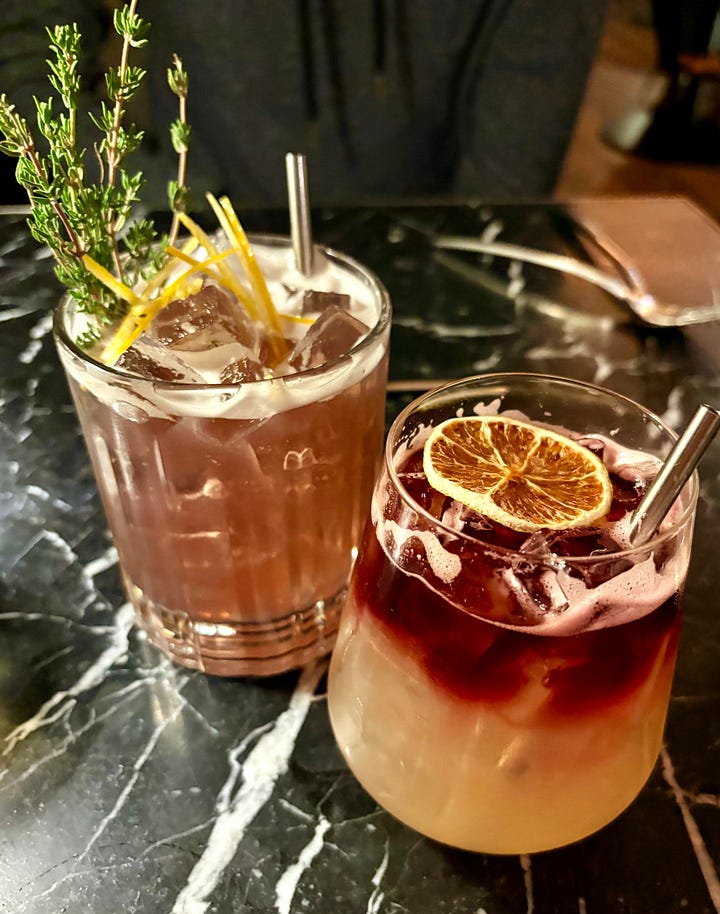
No journey through New Zealand would be complete without venturing into the vast, untamed wilderness of Fiordland National Park. Carved by ancient glaciers and draped in mist, the landscape here feels primeval — towering granite peaks plunge into ink-dark waters, and waterfalls cascade down sheer cliffs in silver threads. The route out to its crown jewel, Milford sound, is long and circuitous. Despite the fjord sitting only about seventy kilometres from Queenstown, the drive is closer to three hundred kilometres (about a four hour trip one way) due to the terrain and the necessity of circumnavigating Lake Wakatipu.
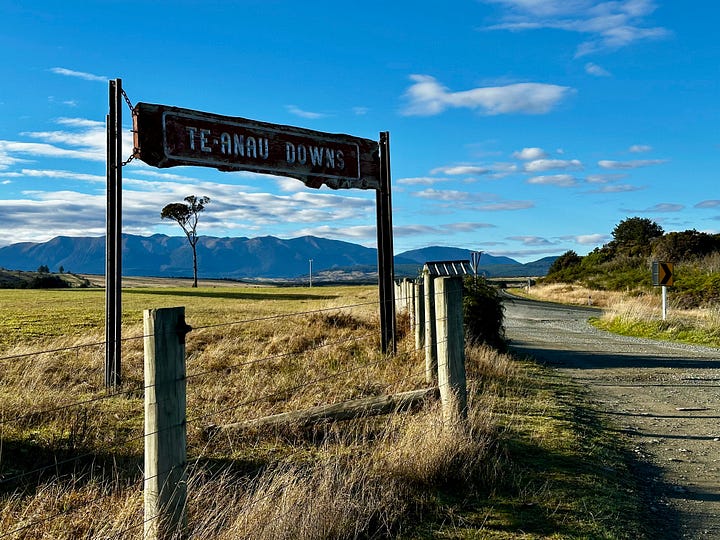
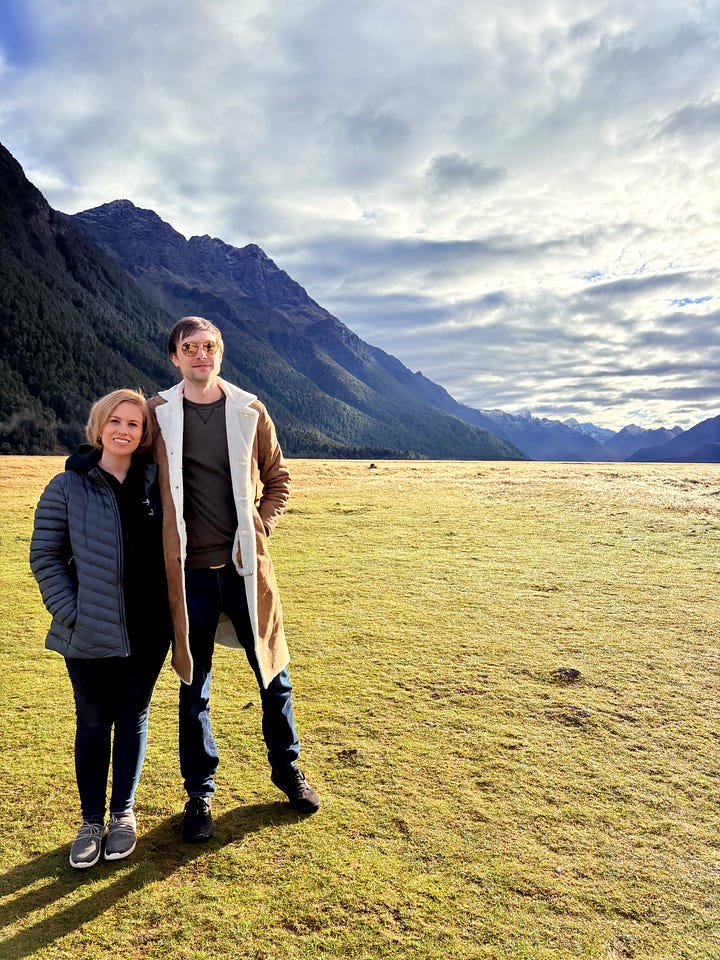
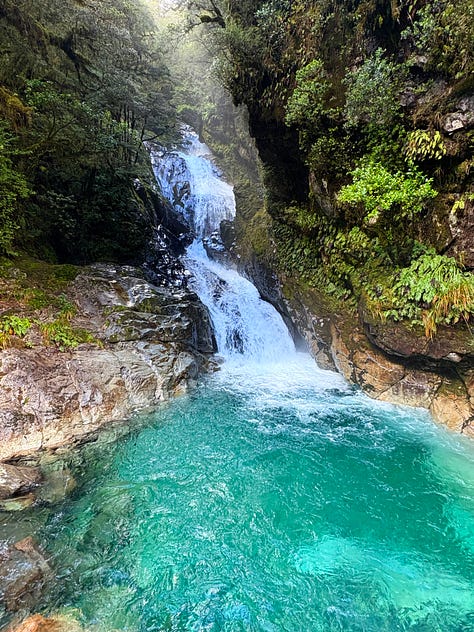


Eventually we made it past the mountains, valleys, waterfalls, and cheeky kea birds to the fjord itself, where we boarded a shipand cruised through the storied waters of Milford Sound, once called the “eighth wonder of the world” by Rudyard Kipling, with dolphins playing in our wake. The park, one of the largest in the world and part of the Te Wāhipounamu UNESCO World Heritage site, offers a rare chance to witness nature on its grandest scale: raw, remote, and humbling in its beauty.
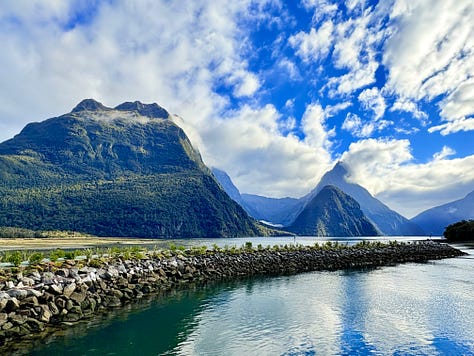

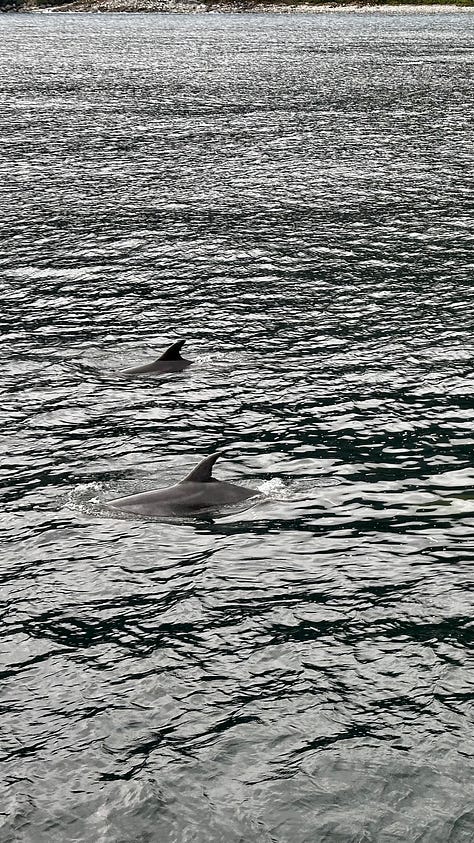

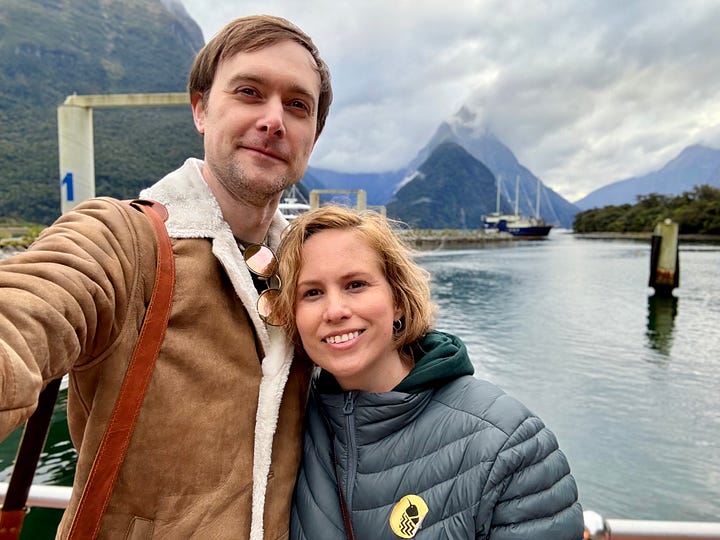
Day Twelve: Christchurch
After Queenstown, it was off again to Christchurch, which I have to say is perhaps my favourite of any of the towns and villages we stopped in during our journey across New Zealand. We had the opportunity to stay in an old former observatory, part of the science complex of what used to be the University of Canterbury. From there, we toodled around town, visiting the botanic gardens and riding around on the trolley. Their art gallery was enthralling, and we whiled away our afternoon there before holing up in a cute gin bar on New Regent Street. In the evening, we struck out on the trolley once more, this time for a magical dinner tour around town.
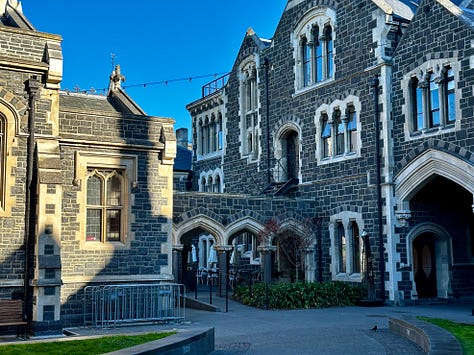
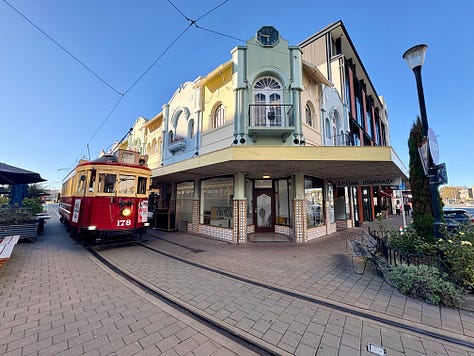
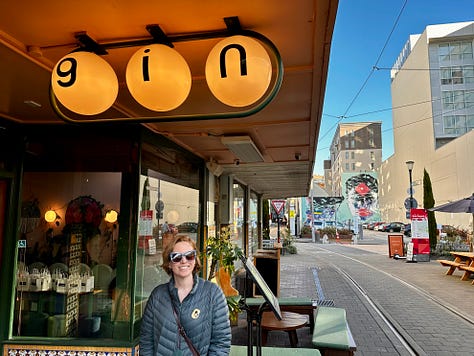
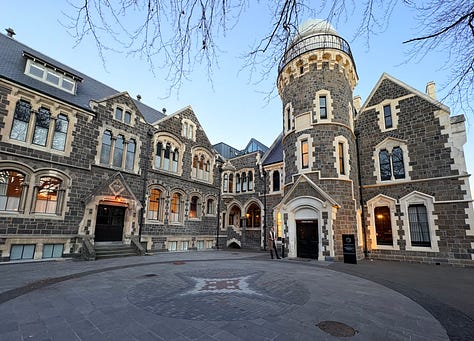


The following day, we struck out again, this time for Arthur’s Pass by way of Castle Hill (another filming location, this time from 2005’s The Lion, the Witch, and the Wardrobe). Scattered across a golden tussock plain, the massive limestone boulders of Castle Hill rise like the ruins of some ancient, giant-built city. Known to Ngāi Tahu as Kura Tāwhiti — “the treasure from afar” — the site holds deep cultural significance, once serving as a place of learning and seasonal gathering. The surreal landscape has earned it the nickname “spiritual center of the universe” from the Dalai Lama, and wandering among the monoliths, it’s easy to see why. There’s a timeless energy in the air, a sense that myth and geology are inseparably entwined here.

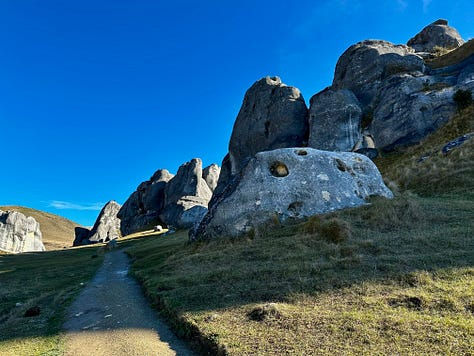
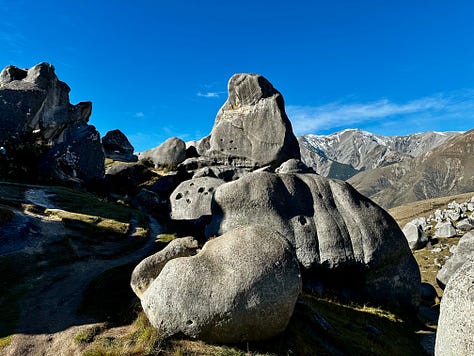



From there, we headed up to Arthur’s Pass, went on a quick hike up to the Devil’s Caultron waterfall, and then headed over to the train station to board one of the most scenic trains on Earth: the Tranzalpine.
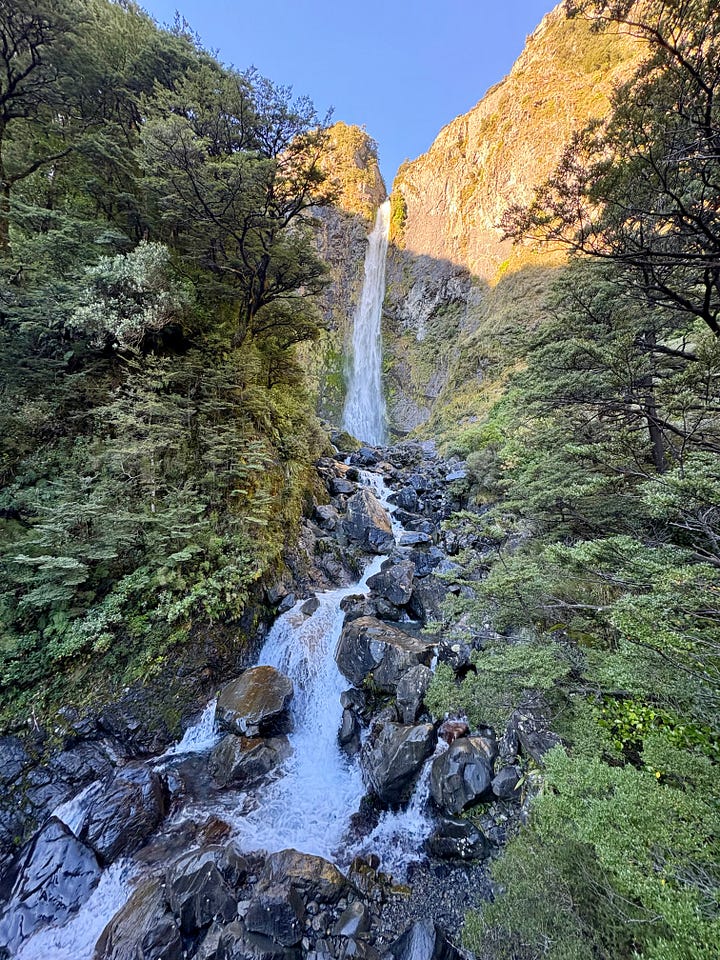

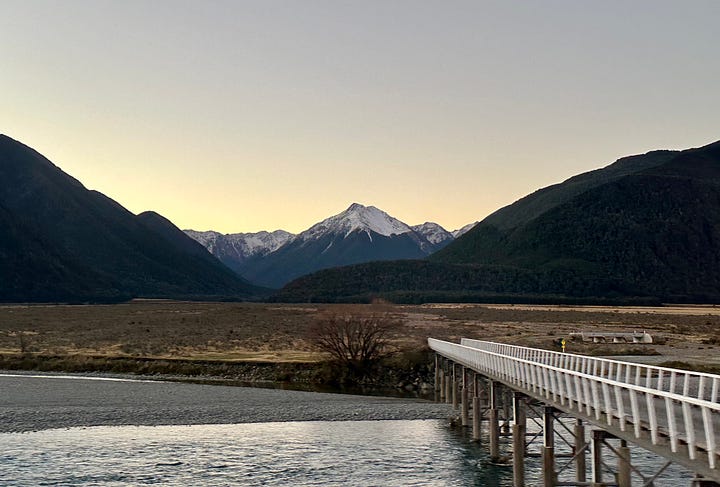
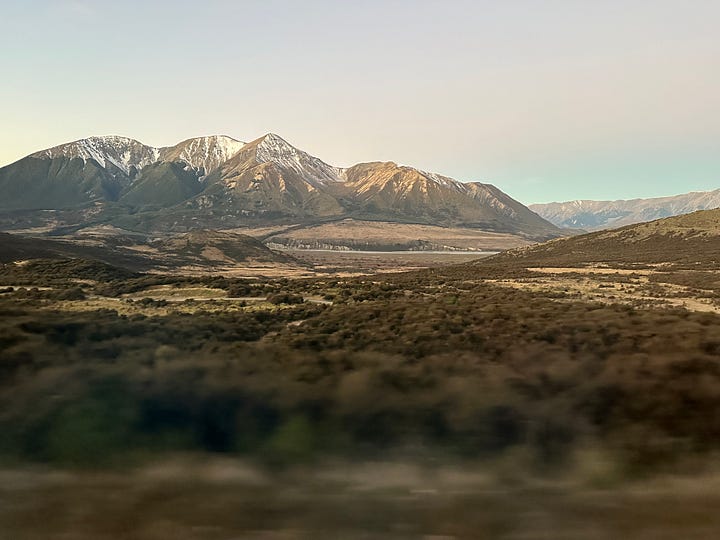
And with that, our epic journey across Aotearoa had come to an end. The following morning, we packed our bags for the last time and headed out of our room. But in a final stroke of celestial providence, who should we run into outside our little observatory chambers but the one and only Wizard of New Zealand himself!
And with his blessing, we were off again, back to Auckland, and then Vancouver, and then Halifax, and then home.



